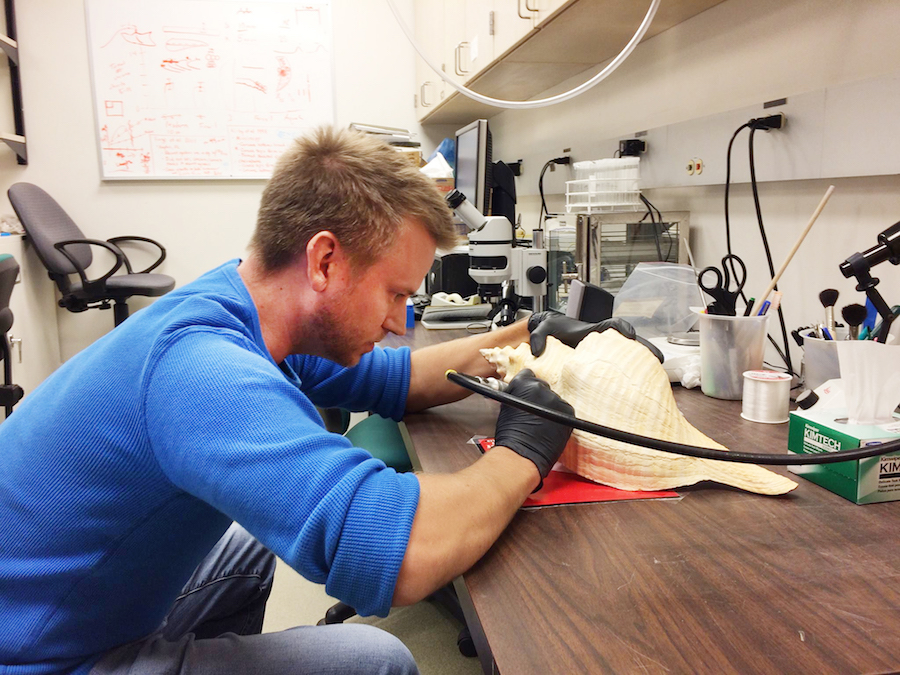Archaeologist Studies Stock Island’s Pre-Columbian Site

For the past two years archaeologist Ryan Harke of Tampa, Florida, has been researching a little-known Pre-Columbian habitation on Stock Island.
The Ph.D. candidate will be in Key West September 20-23 to continue his work.
The site that Harke is studying is a black earth-mound, and is located where the jail and its parking lot now exist. It is considered one of the largest Pre-Columbian habitations known in the Keys. By studying the mound and a large midden of shells, sea-turtle bones, shellfish, and the now extinct Caribbean Monk seal and pygmy sperm whale remains found there, Harke can determine how Florida Keys Native Americans interacted with their island environments 800 years ago. It can help to understand what species they ate and what tools they used.
On Friday, September 21, he will be sharing his findings with Sugarloaf Elementary School 8th grade students as well as with a group of HOB STEM (Science, Technology, Engineering, Math) students, courtesy of Key West Art & Historical Society.
Harke says he is also currently working on fundraising for a Florida State Historical Marker for the site.
“The Department of State, Division of Historical Resources, offers a matching grant program, so of the $2000 total cost, I’m looking to raise $1000.Ninety-five percent of history museums, tours and tourist information is concerned with the European, American, and later Caribbean presence in the islands,” he added. “It’s exciting to learn more about the first people to ever inhabit Key West and the other Keys.”



